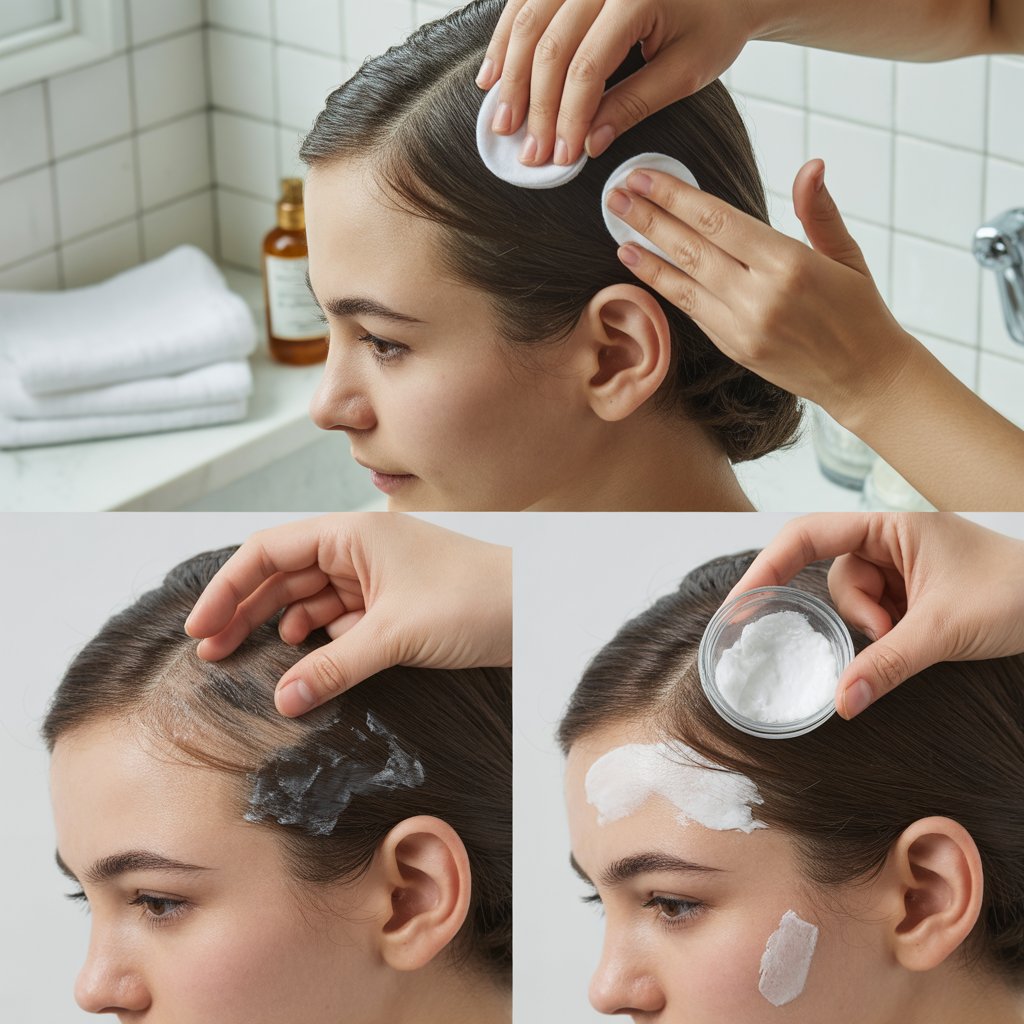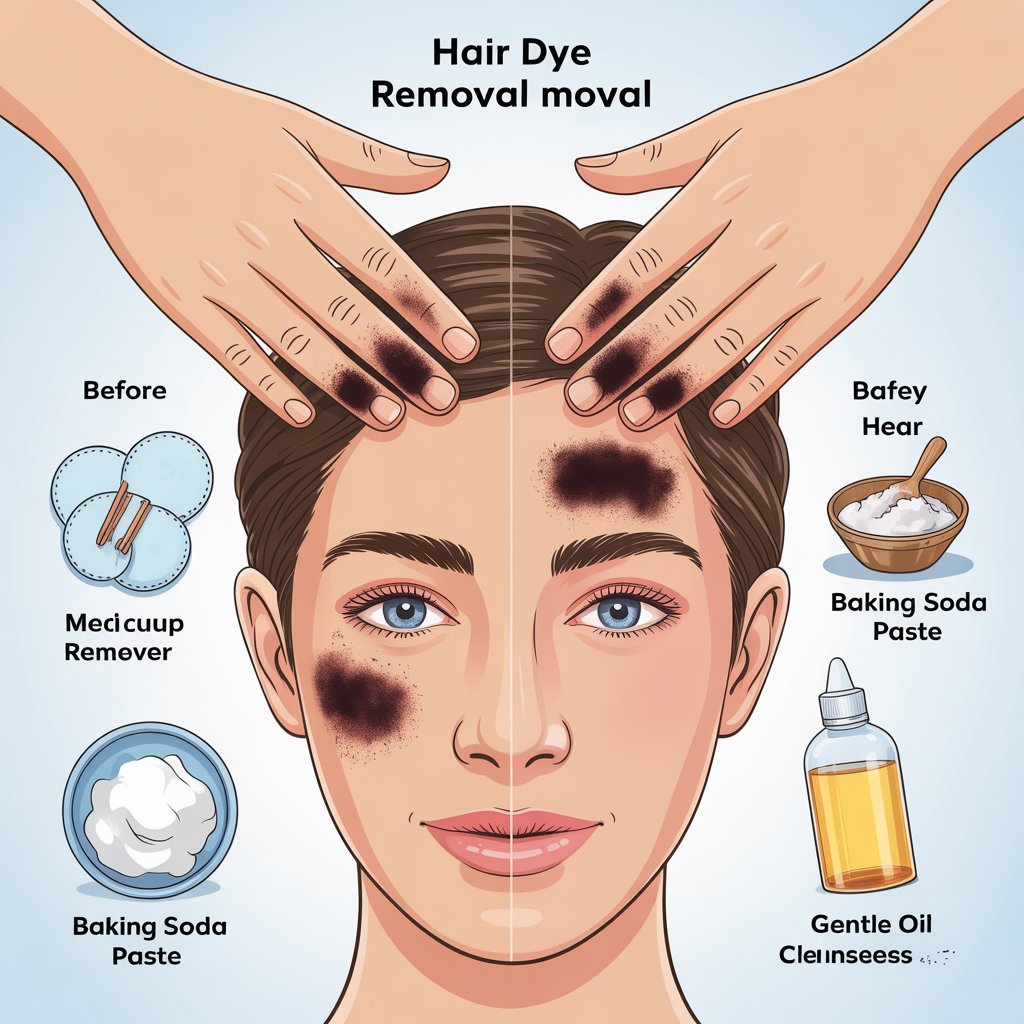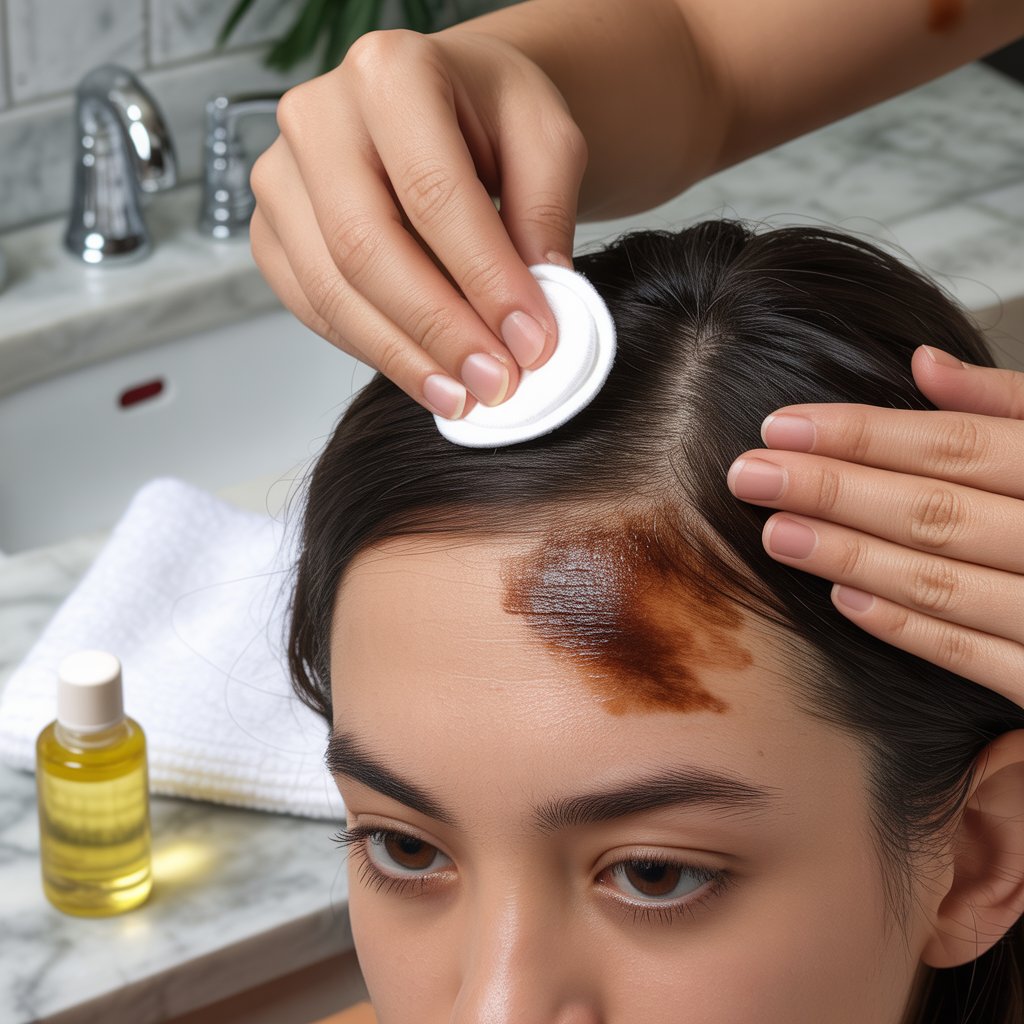How to Remove Hair Dye from Skin
Introduction
How to remove hair dye from skin: We’ve all been there—you’re excited about your new hair color, only to realize that your forehead, ears, and hands are covered in dye stains that just won’t budge. Hair dye stains can be frustrating and embarrassing, especially when you’ve just finished coloring your hair and need to go out. The good news? You don’t have to wait for the stains to fade naturally. With the right techniques and simple household items, you can easily remove hair dye from your skin without irritation.
The key is to act fast. Hair dye contains pigments that are designed to penetrate the hair shaft—and unfortunately, they can also stick to your skin. The longer the dye sits on your skin, the deeper it stains. Whether you used a temporary, semi-permanent, or permanent hair dye, knowing how to clean it properly can make all the difference.
In this article, we’ll walk through the best home remedies, store-bought solutions, and expert tips for removing hair dye from your skin safely and effectively. Let’s dive in!

Understanding Hair Dye and Skin Stains
Before trying to remove hair dye from your skin, it’s important to understand why it happens. Hair dyes are formulated with color pigments and chemicals that open the cuticle layer of the hair to deposit color. When these pigments come into contact with your skin, especially on areas like your forehead, neck, and hands, they can bind to the outer layer of skin cells, causing visible stains.
Darker shades like black, brown, and red tend to leave more stubborn stains because they contain a higher concentration of pigments. Lighter colors may also stain, but they’re usually easier to remove. Skin type also plays a role—dry or cracked skin tends to absorb dye more readily, while well-moisturized skin is less likely to stain deeply.
The type of dye matters too. Semi-permanent and permanent dyes are designed to last longer, meaning they cling more firmly to both hair and skin. On the other hand, temporary dyes or toners usually wash off easily.
Understanding this chemistry helps you choose the right removal method. For example, gentle oils can lift light stains, while deeper stains might need mild exfoliation or chemical removers. Knowing your skin type and the dye formula helps you avoid irritation while achieving clean, dye-free skin.
Immediate Actions After Dyeing
If you notice hair dye on your skin during the coloring process, don’t wait until the end to deal with it. The sooner you act, the easier it will be to remove. When dye is fresh and wet, a simple wipe with a damp cloth or makeup remover can do wonders.
Start by gently blotting (not scrubbing) the stained area with a wet cotton pad or soft cloth. Avoid using hot water—it can open up pores, allowing the dye to seep deeper into your skin. Instead, use lukewarm water and mild soap.
Here’s what not to do:
-
Don’t scrub harshly. This can irritate your skin and even spread the stain further.
-
Avoid alcohol or acetone-based products unless absolutely necessary, as they can cause dryness or redness.
-
Don’t panic. Most stains fade within a couple of days even without harsh treatments.
If you notice the stain only after the dye has dried, you may need a bit more effort. But by catching it early, you save yourself from hours of scrubbing and potential irritation. Prevention and immediate cleaning are truly your best allies in this process.

Common Household Remedies
Using Baking Soda and Dish Soap
This is one of the most popular and effective home remedies for removing hair dye from skin. Baking soda acts as a natural exfoliant, while dish soap cuts through the oil and dye residue.
How to use:
-
Mix equal parts baking soda and gentle dish soap in a small bowl.
-
Apply the paste to the stained area using your fingers or a cotton ball.
-
Gently massage in circular motions for 1–2 minutes.
-
Rinse with warm water and pat dry.
If the stain persists, repeat once or twice, but avoid over-scrubbing. Baking soda is slightly abrasive and can dry out the skin if used excessively.
This method works particularly well for stubborn stains on the hands, neck, and hairline. It’s a go-to trick for hairstylists who deal with dye stains daily.
Applying Olive Oil or Coconut Oil
If you have sensitive skin, oils are a much gentler option. Olive oil, coconut oil, or even baby oil can help dissolve the dye pigments without stripping the skin’s natural moisture.
How to use:
-
Apply a small amount of oil to the stained area.
-
Massage gently using circular motions.
-
Leave it on for several hours or overnight.
-
In the morning, wipe off with a warm, damp cloth.
The oil works by softening the pigment, allowing it to lift naturally from the skin’s surface. You may need to repeat the process, but it’s one of the safest and most nourishing options—especially for the face or around the hairline.
If your skin feels irritated from previous scrubbing, this method can soothe and heal while still helping remove the dye. It’s slow but effective—and completely natural.
Toothpaste Method
Believe it or not, toothpaste isn’t just for your teeth. The mild abrasives in whitening toothpaste can help exfoliate and lift hair dye stains from the skin.
How to use:
-
Choose a non-gel whitening toothpaste.
-
Apply a small amount to the stained area.
-
Gently rub it in with your fingers or a soft cloth for 1–2 minutes.
-
Let it sit for 5–10 minutes, then rinse off with warm water.
Toothpaste is especially useful for small stains on the forehead or ears. However, avoid getting it near your eyes, as it can cause irritation.
This method is mild enough for most skin types, but you can follow it up with a moisturizer to prevent dryness.

FAQs
1. How long do hair dye stains usually last on the skin?
Hair dye stains typically fade within 3–5 days as your skin naturally exfoliates. However, darker dyes or those left on the skin for longer periods may take up to a week to disappear completely. Using gentle exfoliants and moisturizing regularly can help speed up the fading process.
2. Can lemon juice remove hair dye from skin?
Yes, lemon juice can help because of its natural acidity and mild bleaching properties. Apply freshly squeezed lemon juice to the stained area using a cotton pad, let it sit for a few minutes, and then rinse with warm water. Be cautious if you have sensitive skin, as lemon can cause irritation or dryness.
3. Is nail polish remover safe for removing dye stains?
While nail polish remover (acetone) can lift dye stains, it’s not recommended for use on facial skin. It can cause burning, redness, and dryness. If you do use it, apply only a small amount to a cotton pad and test it on a small area of skin first, avoiding the face or neck.
4. What’s the safest method for sensitive skin?
For sensitive skin, natural oils like olive oil, coconut oil, or baby oil are the best choices. They gently dissolve dye pigments without irritating your skin. You can also use micellar water or fragrance-free makeup remover for a milder approach.
5. Can baby wipes remove hair dye stains?
Baby wipes are effective for removing fresh dye stains but may not work on dried or set-in stains. Use them immediately after dyeing while the color is still wet. Opt for alcohol-free wipes to prevent skin irritation.
Conclusion
Removing hair dye from your skin doesn’t have to be a frustrating experience. Whether you choose a quick household remedy like baking soda and dish soap, or a gentler approach with oils, there’s always a solution that fits your skin type and situation. The key is to act fast—fresh stains are much easier to lift than dried, set-in ones.
